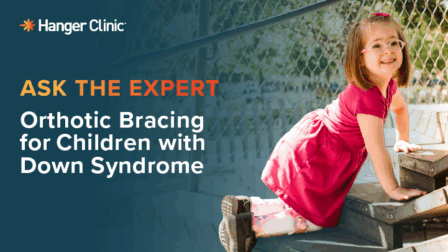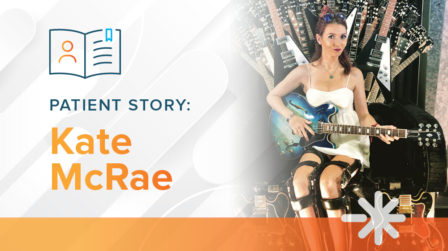Working to Change Policy and Increase Coverage in Orthotic and Prosthetic Care
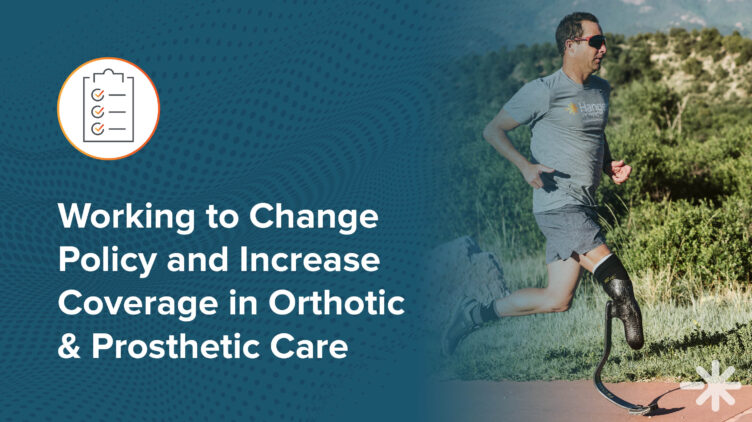
So Every BODY Can Move (formerly known as “So Kids Can Move”) is an initiative to provide greater access to specialized orthotic and prosthetic care used for physical activity. The initiative outlines the need for insurance coverage of medically necessary prosthetic limbs and custom orthotic braces designed to enable individuals with limb loss and limb difference to participate in exercise, recreation, and physical activities.
Prostheses and Orthoses for Physical Activity versus Daily Devices
No one orthotic or prosthetic device can replace the vast array of fundamental human movements lost from amputation, disease, or disorder. That is why specialized orthoses and prostheses designed for use in high-activity environments – such as running, hopping, skipping, jumping, swimming, dancing, bicycling, and more – are needed to prevent damage and minimize injury to both body and device. Without them, equal access to physical activity cannot be achieved.
Let’s look at running. It has different biomechanics than walking. For example, in running, more push-off energy is generated by the ankle than during walking, and upon heel strike, the vertical impact of running can equate to around four times one’s body weight.1 Given this, a specific prosthesis has been designed for running to maximize shock absorption and energy return, while improving comfort and minimizing injury.2
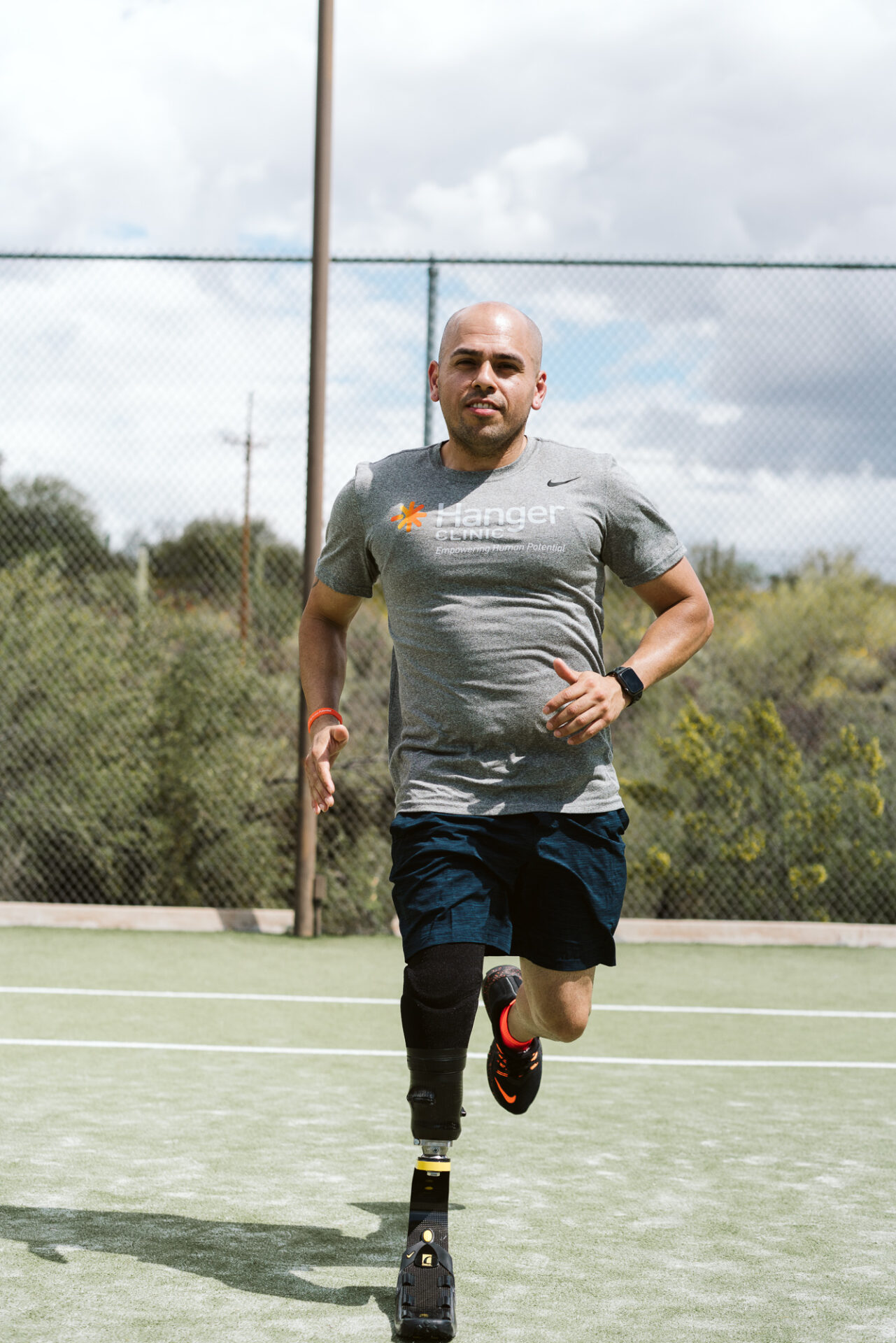
Benefits of Physical Activity
Participating in physical activity to remain healthy, fit, and functional is one of the most important factors in maintaining overall health throughout one’s lifetime.3 Whether it’s vigorous exercise or simple day-to-day movement, being physically active helps with weight management, increases strength and balance, improves mental health, supports better-quality sleep, and reduces the risk of disease and cancer.4
Physical inactivity is the fastest growing public health problem in the country today7, and individuals with limb loss, limb difference, and mobility impairments are disproportionately at risk. In fact, children with disabilities are 4.5 times less likely to engage in physical activity than their peers8 and have 38% higher obesity rates. 9 Additionally, 50% of adults with disabilities do not participate in aerobic physical activity.10 Physical inactivity accounts for roughly 8.7 percent of U.S. healthcare expenditures, or approximately $117 billion per year.11
It is essential for those living with limb loss and limb difference to have the option to wear specialized orthoses and prostheses designed for physical activity. Utilizing an inappropriately designed prosthesis for physical activity can be unsafe for the prosthetic user and can lead to secondary musculoskeletal conditions from overuse.5 Without appropriate prosthetic and orthotic care, the benefits of physical activity cannot be fully realized by people living with limb loss, limb difference, and mobility impairments.6
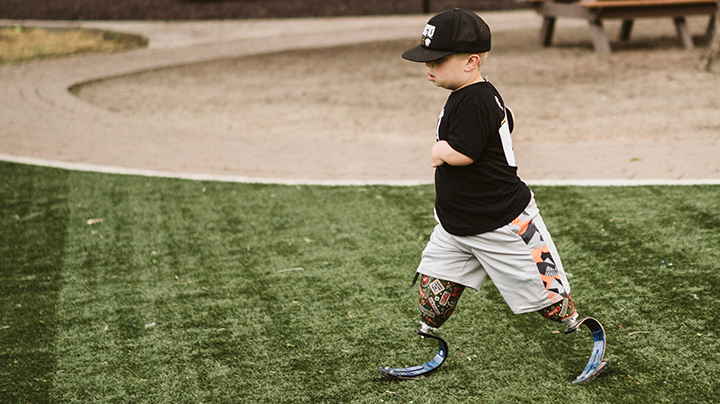
Insurance Coverage of Orthotic and Prosthetic Devices for Physical Activity
In the majority of cases, orthotic and prosthetic care utilized for physical activity is not considered “medically necessary” or “reasonable and necessary” – the standards for insurance coverage – by most federal, state, and private health plans. Without health plan coverage, out-of-pocket costs, ranging from $5,000 – $30,000 per device, often prohibit people who live with amputation from getting access to this technology. As a result, physical activity accessible by specialized orthoses and prostheses is severely limited.
Without insurance coverage, individuals with limb loss and limb difference often remain more sedentary, risk serious injury by exercising with improper devices, or hope to be one of the lucky few to receive a charitable gift or sponsorship. Over 50 nonprofits exist in the United States to provide donated orthotic and prosthetic care that is not covered by insurance, helping thousands of people each year; but collectively, they cannot meet the needs of over two million people living with limb loss in the United States12 and countless more with limb difference and mobility impairments.
So Every BODY Can Move
So Every BODY Can Move is at the forefront of the national disability rights movement, creating equitable and life-changing access to prosthetic and orthotic care for physical activity.

State Advocacy Efforts
There is no one-size-fits-all approach that will work in every state to improve access to orthoses and prostheses. Each state has its own legislative calendar, key players, and pressing issues of the day. Here is an overview of legislative action to date:
Legislation Enacted
Legislation Introduced
- Indiana (HB 1433)
- Massachusetts (H 4096)
- Minnesota (HF 3339 / SF 3351)
- New Jersey (SB 3919)
- New Hampshire (SB 177)
The work to generate awareness and build legislative support for So Every BODY Can Move and the support of the orthotic and prosthetic field takes time and persistent effort.
How To Get Involved
The So Every BODY Can Move initiative is the result of a collaboration between the American Orthotic & Prosthetic Association (AOPA), the National Association for the Advancement of Orthotics and Prosthetics (NAAOP), the Amputee Coalition, and the American Academy of Orthotists and Prosthetists (AAOP).
If you are interested in bringing So Every BODY Can Move to your state, fill out this form or contact Sam Miller, AOPA State and Federal Advocacy Manager at [email protected] to begin the process of advocating for expanded access to orthoses and prostheses utilized for physical activity as medically necessary healthcare for children and young adults in your state. Whether it’s coalition-building, legislative drafting, or contacting policymakers, So Every BODY Can Move has the resources you need to make your voice heard.
Request a Free Evaluation
If you or someone you love are looking for personalized orthotic or prosthetic care, get in touch with a board-certified orthotist/prosthetist at a Hanger Clinic near you.
1 The Anatomy of Running – Vox
2 Ossur-Science-of-Sprinting-Femita-Ayanbeku-2020.pdf (cloudinary.com)
3 Benefits of Physical Activity | Physical Activity | CDC
4 Why Should People be Active? | Physical Activity | CDC
5 Running Biomechanics for People with a Unilateral Transtibial Amputation Using Running-Specific and Daily-Use Prostheses (mines.edu)
6 Insurance-fairness-amputees-act-2019.pdf (amputee-coalition.org)
7 Physical Inactivity: The Biggest Public Health Problem of the 21st Century – PubMed (nih.gov)
8 Why We Must Prioritize Equitable Access to Physical Activity for Children with Disabilities (acsm.org)
9 Disability and Obesity | CDC
10 Vital Signs – Adults with Disabilities (cdc.gov)
11 The High Cost of Inactivity (acefitness.org)
12 Limb Loss Statistics – Amputee Coalition (amputee-coalition.org)
Latest Updates
Subscribe to stay up-to-date on our latest posts.

